
- Date Converter
- Nepali Unicode
- Preeti to Unicode
- Unicode to Preeti
- Digital Marketing
- Entertainment

Essay on Mount Everest

Nepal is a physically and geographically diverse nation. There are diverse landforms, physical topography, climatic situations, natural scenes, etc. around the whole country. Many of the world’s naturally renowned phenomenons are situated inside Nepal. As Nepal is a country of mountains, it’s obvious that various tall mountains are standing on the land of Nepal. Eight out of 10 tallest mountains of the world above 8000m height are located in Nepal. The world’s tallest Mountain Mt.Everest(Sagarmatha) also lies inside Nepal. It is one of the largest wonders of the world and the region around this is a wonderful place.
Mt.Everest is the highest mountain peak on the earth, which lies in the world’s highest Mountain Range, The Himalayas. The height of Mt.Everest is 8848m or 29028.87 ft. In early time, Mt.Everest was referred to as Peak XV and after the British Surveyor Sir. George Everest, this wonderful peak got its name as Everest. It is referred to as “Chomolungma” in Tibet which means the mother goddess of the universe and in Nepal, it is called “Sagarmatha” which means “forehead in the sky”. It was named as Sagarmatha by great Nepali Historian Baburam Acharya.
Mt.Everest, as mentioned above lies on the Himalayan Range and more specifically in the Mahalangur section of the Himalayas. It is situated in the Solkukhumbu district of Nepal. It lies on the border of Nepal and China above the death Zone. The latitude and longitude of the Mt.Everest are 27.9881° N and 86.9250° E respectively.
Climatic Features
The region of Mt.Everest has a very cold climate. The temperature drops to -74°F(-59°C) in the month of January. The region slightly becomes warm in the month of July with around -10°F (-23°C). There are different glaciers in the slopes of Mt.Everest like Kangshung glacier, Rongbuk glacier, Pumori glacier, Khumbu glacier and so on. Glaciers have caused the erosion of different parts of Everest however, global warming has slowly led to the disappearance of glaciers.
Major Attractions
Nepal’s tourism has highly flourished due to this magnificent peak. Thus, the peak itself has been the major attraction to the tourists. The mountain can be enjoyed best at its altitude. The majority of the people around the globe visit Nepal to climb this peak. It’s itself the task of bravery and honor to climb this wonderful peak. Everest base camp is the best trekking route to the peak and it is one of the most visited regions of Himalaya.
Here, visitors can enjoy the natural scenes of different other peaks like Cho Oyu, Lhotse and enjoy the views of rivers, farmlands, Buddhist monasteries, etc. Moreover, the beautiful Tenzing Hillary airport also lies here. Sagarmatha national park can also be the attraction for the visitors as it is dominated by the peak. It comprises alpine and temperate vegetations and different plant species such as lichens, mosses, birches, rhododendrons and much more.
Moreover, different animal species like snow leopard, Himalayan monal, a red panda can also be found here. Besides this park, Namche Bazaar, the gateway of Mt.Everest also allure tourists. It is a busy marketplace where visitors can buy different Tibetan arts, artifacts, trekking equipment and so on. Moreover, the Sherpa Cultural Museum is also in Namche Bazar. Thus, the place has emerged as a tourism hub for everyone who wishes to visit the peak. Also, visitors can experience the cultural aspects of Sherpa people during the trekking to Everest.
Facts About Successful Attempts of Everest
Edmund Hillary and Tenzing Norgay Sherpa are the first two persons to climb the summit successfully in the year 1953. Since then, many successful attempts have been made to reach the peak. American Tom Whittaker is the first disabled person to reach the summit in 1992 with this prosthetic legs. In 1975, Junko Tabei from Japan became the first women to successfully climb the peak. Sherpa Ang Rita is the record holder for climbing the summit ten times. Pasang Lhamu Sherpa is the first Nepalese woman to climb Mt.Everest which she did in the year 2007. More than 600 climbers from different countries have successfully climbed the peak.
Tourism in Nepal | Best Experience in Life
Share this:
Read also related posts, privacy overview.

- Privacy Policy
- Terms of Use
- Essay | Paragraph
- ArticleFeed
Essay on Mount Everest | Paragraph on Everest | 700+ Words

Mount Everest is the highest peak in the world. The beauty and glory of Mount Everest cannot be contained in just simple words. Read more about the mountain peak below:
Essay on Mount Everest
There are various landmarks on Earth. Many are results of natural events and occurrences that happen between extended periods of time. Such landforms create a unique environment and places that pique the interest of many. Out of many natural landmarks, mountains are one of them. Mountains rise higher than their surroundings, they are elevated to higher altitudes by means of natural forces long ago. Many mountains are present on Earth and out of the many beautiful snow-capped or stone-plated mountains, the highest one of them all is Mount Everest.
Mount Everest is the highest peak in the Himalayas of Nepal. It stands at about 8848 meters from sea level. It is located above the death zone on the Nepal-China border. It was named after Sir. George Everest, a surveyor back in the 19th century early time. It is also called by the name “Chomolungma” which translates to the mother goddess of the universe. The locals of Nepal refer to it as “Sagarmatha”. Sagarmatha means forehead in the sky implying it to be the highest point to touch the sky. Nepalese Historian Baburam Acharya named it so.
For you: Importance of Personal Hygiene
Mountains are snow capped due to their cold environment where water turns into snowflakes. In the colder months like January, the temperature drops to below -55 degrees Celsius whereas in the month of July, the temperature in the area rises roughly to -10°F (-23°C). Mount Everest also has a lot of glaciers. Glaciers are large bodies of crystalline ice, rocks, and water. Glacier waters are considered pure for consumption too.
The Himalayan mountains house many indigenous groups of the country. Sherpa people are the most famous and renowned group due to the name having different meanings for mountaineering. The main attraction of Mount Everest isn’t snow or glacier lakes. The main reason people come to the peak of the world is for climbing it. People spend a lot of money for conquering the highest peak of the world. And for this very reason, climbers who want to scale mount Everest need help from the Sherpas. Sherpas are accustomed to the low oxygen levels and they act as navigators, porters, and guides for climbing the peak.
Edmund Hillary (a New Zealand mountaineer) and his Nepalese guide Tenzing Norgay were the first persons to summit Everest. They first ascended the peak in 1953.
It is without a doubt that trying to climb Mount Everest comes with high risk. Climbing the highest peak has become a popular expedition for mountain climbing enthusiasts but is a very dangerous undertaking. Climbing Everest takes a lot of experience, strength, and willpower. Every year many lose their lives in hopes of getting to the top of the peak. Blizzards, storms, cold temperatures, avalanches, glacier lake outbursts, and most importantly altitude sickness are some fear factors to take into consideration. Nevertheless, to stand at peak of the world is really a proud achievement.
The majestic mountain has become one of the main reasons for its popularity in the Nepalese tourism industry. Not all tourists come to climb mountains. Many people come for viewing the natural scenery of other peaks, rivers, farmlands, and temples. The area also consists of Sagarmatha National Park which has temperate vegetation, and its own set of diverse flora and faunas. Snow leopards, red pandas, etc are famous animals around these regions. The place has turned into a hub for all nature and Tibetian local produce enthusiasts.
For You: Importance of English Language
Introduction of tourism to any place does well. It invites foreign currency, uplifts the standard of the locals and their livelihood. But it also comes with its own set of disadvantages. Since the number of people on the mountain has grown, so has the amount of pollution at the peak, as climbers frequently throw undesirable goods all over the mountain. Many tourists have also exploited the people, spreading western culture and disturbing their traditional way of life. Being a Sherpa Guide is a very dangerous profession, with low pay.
People can be blinded by the glory that standing on top of the world and look over the fact that many people have lost their lives on the mountain. A dark truth is that their bodies have to be left on the cold mountain as they cannot descend the body down.
To conclude, Mount Everest is a land form that is the highest peak to be around. A landmark that almost all Nepalese can proudly represent themselves as. Due to the massive traffic of people in these regions, traditional ways can be disturbed, lands polluted and flora fauna disturbed. The government should make proper rules and policies, promote such land forms, keep these areas safe from pollution, protect the flora fauna, and traditions.
Nepalese Culture
Core concepts.
- Companionship
- Interdependence
- Dependability
Nepal is a landlocked, mountainous country located between India and Tibet. It is well known for the impressive Himalayan range and deep valleys that shape the landscape. Nepalis have a reputation for being dependable and resilient people who can withstand difficult conditions. This was recently exemplified in the stoic national response following the devastating earthquake of 2015. Nepalis often exhibit patience and calmness, and are generally not overly dramatic people. Their tolerance has enabled many different faiths and ethnicities to coexist quite harmoniously. Much of Nepal’s culture is deeply steeped in tradition and religion. However, new values and ideas are being introduced to the general population in light of a new democratic political order.
Nepalis are generally deeply loyal to their citizenship and culture. They are very proud that their country has never been colonised, seeing this as a key distinguishing fact between them and India. The Gurkhas (Nepali soldiers) continue to be highly admired for their role in this regard1. Nepalis understand the worth and beauty of their land. The culture is enigmatic with many religious customs, rituals, festivals, processions and local secrets. Yet, people also share a sense of sadness regarding the widespread poverty and mismanagement of their country. Indeed, poverty is an undeniable social issue. This, coupled with an unstable political situation, means the primary ambition of most Nepalis is generally to secure a stable future for their family.
Nepal is largely underdeveloped with limited social services and public infrastructure. There are very few urban centres outside of the capital city of Kathmandu. An estimated 83% of the population live in rural areas (2011). The geographical isolation that the mountains create has generally led many villages to be secluded from outside influence, meaning many have retained quite a distinct cultural identity. Tribal and nomadic practices continue in many places. The diversity of customs and values between regions means Nepal cannot be broadly generalised. However, typically it can be observed that the more remotely situated a community is, the more visibly traditional their cultural practices will be. Meanwhile, those regions with access to better education are likely to have diverged from some aspects of traditional social customs. Kathmandu in particular is becoming very outward looking, drawing influence from across the globe. Recent cosmopolitan transformation is visible in fashion as traditional Nepali attire is now usually only worn in rural areas.
Social Hierarchies
Nepali culture is quite hierarchical and there is significant stratification between the poorest and the most powerful of society. People mostly accept these differences in social status as the natural order and defer to those who are older or who they perceive to have a high reputation. However, a person’s status and background is not always immediately evident in Nepal. For example, one may find that a fruit seller has a degree in business. As it can be difficult to assume someone’s status from their appearance, Nepalis commonly ask about one’s age, profession, education and family background to determine the correct level of respect to be shown. Westerners often find that they are deferred to a lot and treated with high regard as (relatively speaking) they are considered to be very wealthy in Nepal. Land ownership is also a common measure of status. However, one’s family reputation and status ( ijat ) is generally thought to be more important than material wealth. People are not expected to be respected because of their money, but rather their virtue. There is also a preference shown towards those who are educated or speak English. This being said, many Nepalis are gradually becoming more materialistic and money focused.
The Nepali awareness of status is also heavily influenced by the Hindu caste system . Although often classified under one term, the ‘caste’ system actually represents multiple overlapping systems of stratification. The ‘ varna ’ system divides society into four broad categories (varna) that are sometimes described as clusters of castes. These are the Brahmins, Kshatriyas, Vaishyas and Sudras. Each varna is considered to indicate a different level of ‘purity’ – with the Brahmins being the holiest/purest in Hinduism. Within each varna, there are more specific ‘ thar ’ categories that specify the social community one is born into and are often referred to in terms of vocation/employment. They are allocated and stratified into the varna system depending on the person’s social status. For example, occupations considered ‘dirty’ – such as cleaning or handling cow leather – are situated within the lower varna class of Sudra.
One’s caste traditionally determined the person’s line of work, position in the social hierarchy and defined ideas of self-worth. Despite it becoming illegal to discriminate on the basis of caste in 1962, the influence of this social stratification has remained. Some Nepalis may socialise and marry within their caste while others may even ostracise those belonging to subordinate castes. For example, they may not accept offers of food from someone of a low caste, believing it to be ‘impure’. Nevertheless, as Nepal modernises, the social constraints of the caste system are fading. In Kathmandu, for instance, where castes mix on a daily basis, the concern regarding others’ castes is diminishing. The younger generation is also particularly liberal and open towards all castes. One of the main agendas of the incoming government has been to recognise all castes.
Ethnic Demographic
People’s social distinction, be it their caste or ethnicity , plays a big role in informing their personal identity in Nepal. For example, many Nepalis use the name of their ethnic group or caste as their surname. An individual’s ethnicity is different from their caste. While one’s caste is usually indicative of occupation and family status, ethnic groups commonly share a distinctive language, ancestral home, religious tradition or form of social organisation.
The government has identified between 50 and 60 Nepali ethnicities (2011). Many of these are indigenous to Nepal and have origins as the original inhabitants of a certain region (e.g. the Tharu and Tamang people). Other ethnicities in Nepal, while not native, are often historical inhabitants of the areas. Some of the biggest ethnicities are the Brahmin-Chhetri, Magars and Newars.
The ethnic makeup of Nepal reflects the historical migratory patterns into the country from the North and South. Broadly, the castes and ethnicities can be broken down into two main groups: Tibeto-Burmans and Indo-Aryans. This differentiation between the two is not so much socially distinctive, but often visible in hereditary features that suggest distant ancestry. Indo-Aryans typically have similar appearances to their Indian neighbours in the South, whilst Tibeto-Burmans generally resemble Mongol or Tibetan people. Indo-Aryans are more populous and have come to dominate Nepal socially, politically and economically, while Tibeto-Burmans traditionally inhabit the mountains at very high altitudes. However, with increasing urban and overseas migration, the geographic differentiation between ethnicities is reducing.
Nepalis with foreign ancestry may have retained certain cultural influences that relate to their ancestral background. For example, those from India commonly follow Hinduism, whilst Tibeto-Burmans are generally Buddhist. However, these labels purely serve as a helpful way to categorise the origins of Nepal's ethnic diversity and don’t necessarily reflect Nepali people’s personal identity. People are unlikely to describe themselves as ‘Tibeto-Burman’ or ‘Indo-Aryan’. Every individual ethnicity has developed a strong and distinctive cultural identity. They often share a common language, belief or form of social organisation unique to their ethnic group.
Collectivism
Nepali culture is very collectivistic. Families may combine their assets in order for all members to be economically secure, and close friends perform favours for one another on a regular basis. This interdependence has been largely driven by necessity, as the government cannot always be relied upon to provide support. Instead, Nepalis tend to be deeply reliant on and loyal to their family and social group. It’s common for people to forfeit their own aspirations for the betterment of their entire family unit. For example, one person may work in very difficult conditions whilst sending remittances back to others. In rural areas and at high altitudes especially, people depend on their community for survival, and basic assets are shared communally. Village elders are often the authority figures of these communities. Those who are urban, educated and internationally exposed may be more individualistic in their outlook. However, given the underdeveloped status of Nepal, economic independence is still difficult to attain.
Friendship and Company
Most friendships have a strong significance and substance to people in Nepal. They are approached quite earnestly and are not usually shallow relationships that come and go quickly. There is a sense of graciousness that comes with sharing in another’s company; people are constantly “humbled” to meet others, have a guest or gain a new friend. Once the growth of a friendship begins, so too does an expectation of loyalty and reliability. People often reach out to friends for personal favours and support and may expect to be granted certain privileges (such as job opportunities) on the basis of the relationship.
Generally, Nepalis feel most comfortable when they are accompanied in whatever they do. They love companionship and are known to strike up conversation for little reason other than to talk. This aspect of Nepali culture makes it feel very warm and inclusive. People rarely go anywhere alone ( eklai ), particularly women. Those who are travelling alone can expect to be questioned out of curiosity as to why; solo travellers are usually sent off with a blessing and so are accompanied by the wishes and prayers of their family.
Purity and Fatalism
A deep moral and ethical awareness is interlaced into daily life in Nepal. This is influenced by religious values and beliefs, as well as cultural ideas of purity. They are deeply entrenched and ritualised in people’s diet and personal practice. Almost any action, object, job or person can be categorised as particularly ‘pure’ or ‘impure’. Nepalis can be quite reserved in their behaviour, acting modestly in accord with what is considered to be appropriate behaviour within these cultural guidelines.
The fundamental importance religion holds in many Nepalis’ lives also influences their approach to problem solving. It is common for people to take a fatalistic attitude, assuming the cause of problems to be the result of a god or spirit’s work. For example, witches are sometimes thought to be the cause of bad luck. This fatalism does not necessarily mean people are passive, waiting for things to occur at the will of a god. Nepalis generally work very hard until the point that they can do no more – from there, “what will be will be”. However, misfortunes are often attributed to an individual’s behaviour; for instance, bad health is commonly perceived to result from bad karma. Therefore, Nepalis are known to be quite stoic and tolerant in difficult situations as this explanation of problems can make them feel as if they somewhat deserve to suffer.
_____________________
1 The Nepali military played a famous role in fighting the British off.2 See the statistics on the side of this page for a list of different ethnic groups in Nepal.
Get a downloadable PDF that you can share, print and read.
Develop diverse workforces, markets and communities with our new platform
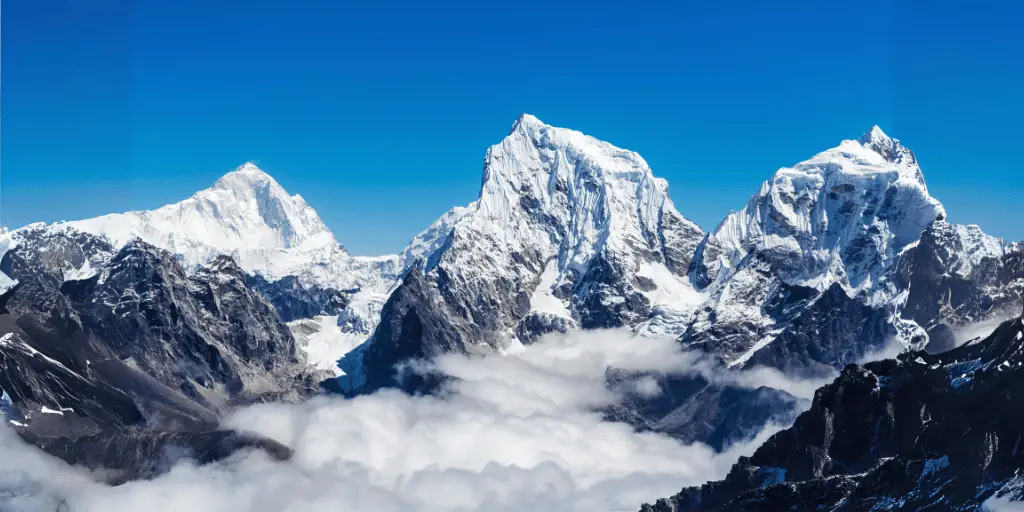
Essay on Himalaya Mountains For Students in 1000 Words
In this article, you will read about the Essay on Himalaya Mountains for Students in 1000 Words. It comprises the formation, history, geography, weather conditions, trekking, traveling, and more about the Himalayan mountains.
Table of Contents
Essay on Himalaya Mountains (1000 Words)
Hi, and welcome to the beautiful world of the Himalaya Mountains. This world is a reminder of how strong nature is. These mountains hold secrets about how the Earth was formed.
They are full of different kinds of plants and animals and have a lot of culture and history. They’re not just a part of the landscape; they’re a sign of how strong people are and how beautiful nature is.
As you travel through the Himalayas, you will be amazed by their stunning beauty, learn about their natural wonders, and understand how important they are for the environment .
The Himalayas are more than just a pretty background; they are home to many different cultures and a great trove of rare plants and animals. This article will teach you more about this wonderful mountain range.
Let’s start this educational trip through the Himalayas, where you will learn about their secrets and beauty.
How the Himalayas were formed?
The Himalayas are a great place to learn about rocks and minerals. When the tectonic plates came together, they caused a huge earthquake that made the tallest mountains on Earth.
Mountains in the Himalayas, like the tall peaks, deep valleys, and rushing rivers, tell stories about their rough beginnings and development.
Geologically, the Himalayas are pretty new. They were made about 70 million years ago. It’s interesting that the Himalayas are still getting higher, though very slowly.
This is because the tectonic plates are still crashing into each other. Geological processes happening in the Himalayas give us a look into the past of Earth and help us understand how it changes over time.
How did the Himalayas get their shape?
How the Himalayan mountains were formed is an interesting story of collisions and chaos. A little over 225 million years ago, the Indian Subcontinent was a big island off the coast of Australia.
In the process of slowly moving northward, it crashed into the Eurasian continental plate. When the two plates hit each other, they pushed the sea bottom up, making a mountain range.
The Himalayas are the world’s highest and youngest mountain range. They were formed when tectonic plates crashed into each other.
Mountains are getting about 5 millimeters taller every year because of this process that is still going on. The strong forces that shape our world can be seen in how the Himalayas were formed.
What the Himalayas look like physically: their division, area, and geography?
The Himalayas cover a huge area and are in five different countries: India, Nepal, China, and Pakistan. There are three bands that run parallel to each other from east to west.
These are the Greater Himalayas, the Lesser Himalayas, and the Outer Himalayas. Each of these areas has its own unique landscape and plants and animals that live in them.
Most of the tallest mountains, like Mount Everest and K2, are in the Greater Himalayan range, which is also called the High Himalayas. You can also call the Lesser Himalayas the Middle Himalayas.
It has some of the world’s most important river valleys and hill towns. The Outer Himalayas, which are also called the Shivaliks, are made up of ridges and valleys that are known for their rich biodiversity and fertile land.
Learning about the three mountain ranges that constitute the Himalayas
Three mountain groups make up the Himalayas: the Greater Himalayas, the Lesser Himalayas, and the Outer Himalayas.
The general ecological diversity of the Himalaya Mountains is increased by the fact that each range has its own unique landscape, climate, and plant and animal life.
The Greater Himalayas is the northernmost range. It has some of the world’s highest peaks and is known for its rough landscape and harsh weather.
South of the Greater Himalayas are the Lesser Himalayas, which are known for their lush green woods and wide range of animals.
The Outer Himalayas are the southernmost range. They have lower elevations, fertile valleys, and a mild temperature.
In the Himalayas, K2 is the tallest mountain in the world
The second-highest peak in the world, K2, is a wonder of the Himalayan mountain range. This huge hill is on the border between China and Pakistan.
It is 8,611 meters (28,251 feet) above sea level. K2 is famous for being a difficult place to climb and having amazing natural beauty. It is also known as Mount Godwin-Austen or Chhogori.
Even though K2 is lower than Everest, it is often thought of as the hardest mountain to climb because of its steep slopes, unpredictable weather, and high death rate among hikers.
Climbers from all over the world still come to K2 to try to reach the top and feel the thrill of being on top of the “Savage Mountain.”
What the Himalaya mountains weather and temperature are like?
The climate and temperature of the Himalayas change a lot based on the season, latitude, and height. The climate in the lower Himalayas is subtropical, which means that summers are hot and winters are mild.
The weather gets milder as you go up the hills, with cool summers and cold winters. The highest parts of the country are always covered in snow and experience freezing temps.
From June to September, the monsoon season brings a lot of rain to the southern slopes of the Himalayas. From November to February, there is a lot of snow in the higher areas during the winter.
The Himalayas have plenty of different environments and species because the climate and temperature change all over the range.
The Yeti and the History of the Himalaya Mountains
The Himalayas are as interesting for their history and tales as they are for their natural beauty. One of the oldest stories is about the Yeti, who is also known as the “Abominable Snowman.”
For hundreds of years, both locals and travelers have said they have seen a big, ape-like animal roaming the snowy Himalayas.
People all over the world are still fascinated by the Yeti legend, even though there is no solid proof to support its existence. It’s not just a myth that the Yeti exists; it represents the Himalayas’ secrets and wild spirit.
What do the Himalaya mountains mean for the environment?
It’s impossible to say enough about how important the Himalayas are for the environment. They are home to many endemic types of plants and animals, making them one of the world’s biodiversity hotspots.
Because the Himalayas have a wide range of climates and landscapes, they have a wide range of ecosystems, from alpine meadows and subtropical woods to cold deserts and wetlands.
The Himalayas are also very important for keeping the Earth’s temperature stable. They form a natural shield that changes the way wind and rain blow. Moreover, millions of people in Asia depend on the glaciers in the Himalayas for their water needs.
A special link between Nepal and the Himalaya mountains?
Nepal has an important bond with the Himalayas. Everest is one of eight of the world’s ten highest peaks in Nepal, which is why it is often called the “Roof of the World.” The Himalayas’ tall peaks have changed the country’s landscape, climate, and way of life.
Mountain trekking is a popular sport in Nepal that draws thrill-seekers from all over the world. Nepal is an interesting place to visit if you want to see the grandeur of the Himalayas because of its pristine landscapes, diverse wildlife, and lively cultures.
What earthquakes do to the Himalayas?
Since the Himalayas are in an area that is prone to earthquakes, they happen often.
Tectonic plates are constantly bumping into each other, which causes stress that is sometimes released in the form of earthquakes. These earthquakes can be very bad and cause damage to property and loss of life.
However, earthquakes are also very important to the Himalayan environment because they create new landforms and change the ones that are already there.
Understanding the earthquakes that happen in the Himalayas is important for lowering risks and keeping the people who live there safe.
Mountain trekking and traveling in the Himalayas
Trekking and tourism in the Himalayas are important parts of the area. The Himalayas offer visitors a one-of-a-kind and unforgettable experience with their stunning landscapes, lively cultures, and wide range of animals.
There are many trekking routes that range from easy walks to difficult climbs, so there is something for every level of explorer.
Tourists also play a big role in the economies of places in the Himalayas. Besides creating jobs, it also helps protect the environment and encourages culture exchange.
To protect the Himalayas’ natural beauty and ecological balance, it is very important to encourage travel that doesn’t harm the environment.
Fun and interesting facts about the Himalayas
Have you heard that the Himalayas have some of the highest places where people live in the world? Or that they are home to more than 15,000 glaciers that hold about 12 000 km³ of freshwater?
Here are some more interesting facts: Many important rivers in Asia start in the Himalayas. The Ganges, the Indus, the Brahmaputra, and the Yangtze are just a few. Four of the 34 species hotspots in the world are in the Himalayas.
The Himalayas are a natural wonder that will never go away
The Himalayas are a natural wonder that will never go away. People are amazed and respectful of their tall peaks, dramatic scenery, and wide range of ecosystems.
Understanding the mountains’ geological features, ecological importance, and culture history helps us appreciate them more.
As we work to protect these natural beauties, let us remember that the Himalayas are more than just a mountain range. They show how the Earth is always changing and how strong life is.
Whether you’re an athlete looking to climb the tallest mountains, a nature lover looking for rare species, or a culture vulture eager to learn about different ways of life, the Himalayas will give you an unforgettable experience.
So get your boots on, pack your bags, and get ready for the trip of a lifetime in the beautiful Himalayas.
Leave a comment Cancel reply
- Entertainment
- Environment
- Information Science and Technology
- Social Issues
Home Essay Samples Travelling Mount Everest
Mount Everest: Its Impact on Nepal's Tourism and the Lives of Nepalese People
Table of contents, introduction, the impact on tourism in nepal, the impact on the local communities.
*minimum deadline
Cite this Essay
To export a reference to this article please select a referencing style below

- Religious Site Visit
- Eiffel Tower
Related Essays
Need writing help?
You can always rely on us no matter what type of paper you need
*No hidden charges
100% Unique Essays
Absolutely Confidential
Money Back Guarantee
By clicking “Send Essay”, you agree to our Terms of service and Privacy statement. We will occasionally send you account related emails
You can also get a UNIQUE essay on this or any other topic
Thank you! We’ll contact you as soon as possible.
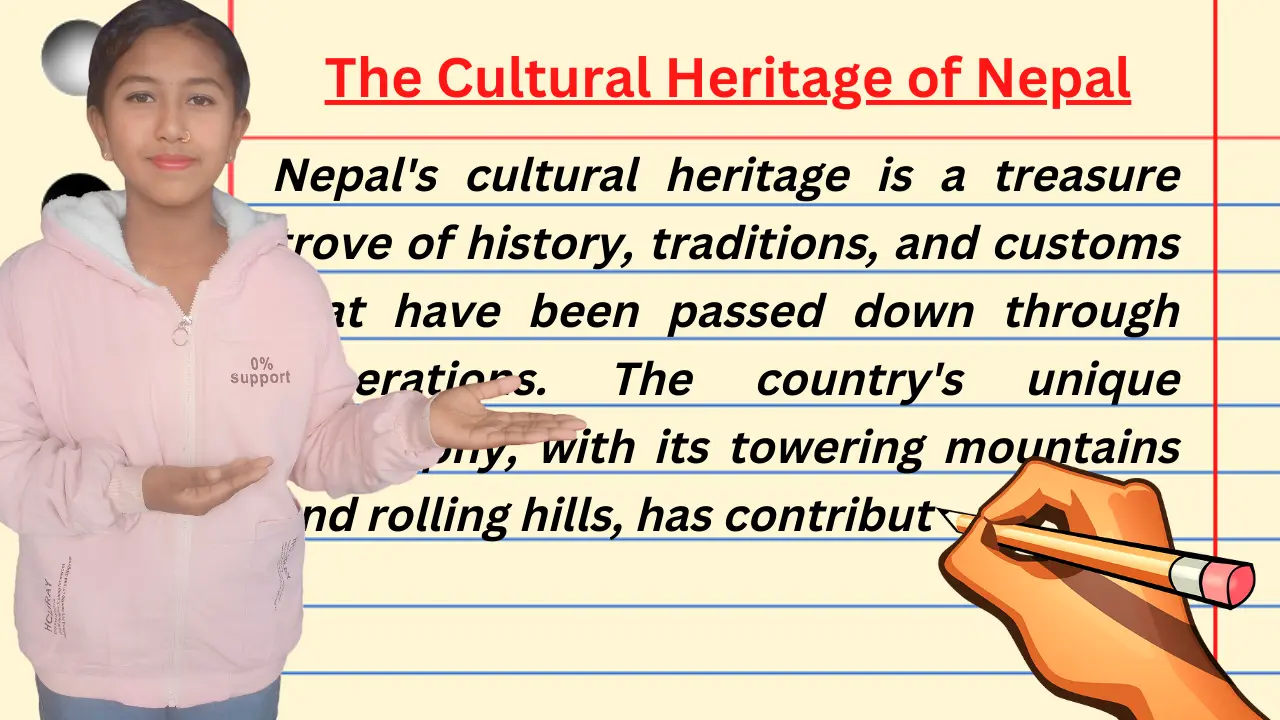
An Essay on The Cultural Heritage of Nepal
Table of contents, introduction.
Nepal’s cultural heritage is a treasure trove of history, traditions, and customs that have been passed down through generations. The country’s unique geography, with its towering mountains and rolling hills, has contributed to the development of a distinct culture that is shaped by various factors. In this essay, we will explore the rich and diverse cultural heritage of Nepal.
Definition of Cultural Heritage
Cultural heritage refers to the inherited values, beliefs, traditions, and artifacts that define a community’s way of life. It includes everything from language and literature to music, dance, art, architecture, and cuisine. Cultural heritage is crucial to maintaining a community’s identity and sense of belonging and provides a window into the past.
Overview of Nepal’s Cultural Heritage
Nepal’s cultural heritage is diverse and has evolved over thousands of years. The country is home to over 125 ethnic groups, each with its distinct traditions and customs. Nepal’s cultural heritage includes art, architecture, music, dance, literature, festivals, religion, spirituality, cuisine, sports, and traditional medicine.
The Importance of Preserving Cultural Heritage
Cultural heritage is an essential part of a community’s identity and sense of belonging. It provides a window into the past and helps us understand our shared history and traditions. Preserving cultural heritage helps promote cultural diversity, which fosters respect and understanding between different communities. It also supports local economies and can help attract tourism, which can be an essential source of revenue for communities.
Historical Background of Nepal
Ancient Civilizations of Nepal
Nepal’s history dates back over 2,000 years, and the country has been home to various civilizations. The major ancient civilizations of Nepal include the Licchavi and the Malla dynasties. These dynasties left a significant impact on Nepal’s cultural heritage, including art, architecture, language, and literature.
The Unification of Nepal under King Prithvi Narayan Shah
Nepal was once a group of small, independent kingdoms and territories until King Prithvi Narayan Shah united them into a single country in the mid-18th century. This unification played a significant role in shaping Nepal’s cultural heritage.
The Impact of British Colonialism on Nepalese Culture
British colonialism also had an impact on Nepalese culture. The influence of British culture was felt in areas such as education, language, and literature. Nepalese culture also shaped British colonialism, with Nepalese soldiers playing a crucial role in the British Indian Army.
The Art and Architecture of Nepal
The Traditional Arts of Nepal
Nepal has a rich tradition of art, which includes painting, sculpture, and wood carving. The Thangka paintings and wood carvings are particularly famous in Nepal and have been influenced by Tibetan art styles.
Famous Nepalese Art Styles and Movements
Newar art is a distinct style of art that is prevalent in Nepal and has been shaped by the traditions of the Newar community. Other popular art movements in Nepal include the Madhubani art style, which originated in India, and the Bhaktapur pottery style, which is specific to the Bhaktapur region.
Symbols and Motifs Used in Nepalese Architecture
Nepalese architecture is famous for its intricate designs and motifs. The use of animals, deities, and other symbols is common in Nepalese architecture. The most famous example of Nepalese architecture is the Kathmandu Durbar Square, which has several ancient temples and palaces.
Festivals and Celebrations in Nepal
Overview of Nepalese Festivals
Nepal is known for its vibrant festivals and celebrations. The country has over 50 official festivals, including religious and national festivals. The festivals are usually associated with specific dates, events, and seasons.
The Role of Festivals in Nepalese Culture
Festivals play a crucial role in Nepalese culture and help to promote social harmony, cultural diversity, and community cohesion. The festivals are a celebration of Nepal’s rich cultural heritage and include traditional music, dance, and crafts.
Popular Festivals and Celebrations and How They Are Celebrated
Some of the most popular festivals in Nepal include the Dashain festival, which celebrates the victory of good over evil, and the Tihar festival, which is a festival of lights. During these festivals, families come together to celebrate, exchange gifts and food, and participate in various social and cultural activities.
Music and Dance in Nepal
Traditional Nepalese Music Genres
Nepal has a rich tradition of music, including classical, folk, and devotional music. The classical music of Nepal is known as Gandharva music, and it has been influenced by Indian music. Folk music is popular in rural areas, and many Nepalese songs are related to agriculture, nature, and love.
Famous Nepalese Musicians
Several famous Nepalese musicians have received international recognition, including Narayan Gopal, Aruna Lama, and the 1974 AD band. These musicians have played a significant role in promoting Nepalese music and culture globally.
Popular Nepalese Dance Forms
Nepal has many traditional dance forms, including the Dhime dance, the Chakra dance, and the Lakhe dance. These dances are usually performed during festivals and religious ceremonies and are a celebration of Nepalese culture and traditions.
Religion and Spirituality in Nepal
Nepal’s Religious and Philosophical Traditions
Nepal is a multi-religious country, with Hinduism and Buddhism as the predominant religions. Other religions practiced in Nepal include Islam, Christianity, and Bon. The country also has a rich tradition of philosophy, including the philosophy of Vedanta and Buddhism.
The Role of Religion in Nepalese Culture
Religion plays an essential role in Nepalese culture and daily life. Religious ceremonies and festivals are an integral part of the Nepalese calendar and are celebrated with great fervor and enthusiasm. The temples and other religious sites in Nepal attract thousands of visitors each year.
Important Religious Sites and Practices in Nepal
Nepal is home to several important religious sites, including the Pashupatinath temple, the Boudhanath stupa, and the Swayambhunath stupa. These sites are revered by devotees all over the world and attract a considerable number of tourists each year.
Cuisine of Nepal
Overview of Nepalese Cuisine
Nepalese cuisine is known for its unique taste and cooking techniques. The cuisine is influenced by India, Tibet, and China and uses a variety of herbs, spices, and vegetables. Some of the most common dishes include dal bhaat, momos, and thukpa.
Unique Ingredients and Cooking Techniques
Nepali cuisine uses unique ingredients such as Timur, a hot pepper that is native to Nepal. Cooking techniques such as smoking, roasting, and grilling are common in Nepalese cuisine. A variety of herbs and spices are also used in the food, including curry leaves, cumin, and coriander.
Popular Nepali Dishes
Some of the most popular Nepali dishes include momos, a type of dumpling filled with meat or vegetables, and dal bhaat, which is a lentil soup served with rice and vegetables. Another famous Nepalese cuisine is Newari cuisine, which consists of rice, meat, and vegetables cooked in traditional spices.
Language and Literature in Nepal
Nepali language and dialects
Nepal is home to over 100 languages and dialects, with Nepali being the most widely spoken language. Other languages spoken in Nepal include Maithili, Bhojpuri, and Tamang. Each language has its own distinct literature and traditions.
Famous Nepali writers and poets
Nepal has produced many famous writers and poets, including Lakshmi Prasad Devkota, known as the “Shakespeare of Nepal”, and Bhupi Sherchan, a prominent Nepali poet who wrote about love and social issues. Are included.
Literary traditions and themes in Nepali literature
Nepali literature is rich and diverse and has its own distinctive themes and traditions. The themes of love, nature, and social issues are prominent in Nepali literature. Folktales and myths are also an important part of Nepali literary traditions.
Sports and Recreation in Nepal
Popular sports in Nepal
Football is the most popular sport in Nepal, and the country has a national football team. Other popular sports include cricket, volleyball, and basketball. Trekking and mountaineering are also popular recreational activities in Nepal.
Traditional sports and entertainment
Nepal has several traditional games, including Gulli Danda, a game played with a stick and small wooden ball, and Bagh Chal, a board game similar to chess. These sports are an important part of Nepali culture and tradition.
Role of sports in Nepali culture
Sports play an essential role in Nepali culture and promote social unity and community spirit. Sporting events are an opportunity to socialize and celebrate as well as an essential source of entertainment and recreation.
Traditional Medicines in Nepal
Overview of Traditional Nepalese Medicines
Nepal has a rich tradition of traditional medicine, involving the use of natural remedies such as herbs, roots, and bark. Traditional medicines have evolved over thousands of years and have been influenced by Indian and Tibetan medicine.
Role of traditional medicines in Nepali health care
Traditional medicines play an essential role in Nepali healthcare and are used to treat a variety of diseases. Traditional medicines are often combined with modern medicine to provide a holistic approach to health care.
Popular practices and treatments
Some of the most popular Nepali remedies include the use of turmeric for anti-inflammatory properties and the use of goat milk for relaxation. Other treatments include the use of the herb jatamasi, used to promote good sleep, and tulsi, used for respiratory problems.
Ethnic Diversity of Nepal
Overview of Nepal’s ethnic groups
Nepal is home to more than 125 ethnic groups, each with its own distinct customs and traditions. Major ethnic groups include the Newar, Magar, Gurung, Tharu, and Tamang. Each ethnic group has its own language, dress, and customs.
Cultural practices and traditions of different ethnic groups
Each ethnic group in Nepal has its own distinct cultural practices and traditions. Some common customs include music and dance performances, traditional attire, and cooking. These customs are an important part of the identity and cultural heritage of each ethnic group.
Importance of recognizing and preserving ethnic diversity
Preserving ethnic diversity is important to promote cultural harmony and understanding. Recognizing and preserving ethnic diversity helps prevent cultural erosion and promotes respect and tolerance among different communities.
Modern Influences on Nepalese Culture
Impact of globalization on Nepali culture
Globalization has had a significant impact on Nepali culture and traditions. The influence of Western culture can be seen in areas like music, language, and fashion. The growing tourism industry has also brought changes in the way people live and interact.
Changing attitudes towards traditional cultural practices
Changing attitudes towards traditional cultural practices have also had an impact on Nepali culture. Many young people are moving away from traditional lifestyles and adopting more modern lifestyles and attitudes.
Balancing modern influences with cultural preservation efforts
It is important to balance modern influences with cultural conservation efforts to preserve Nepal’s rich cultural heritage. This requires a delicate balance between preserving traditional customs and adopting modern attitudes and practices.
Conservation and Preservation of Nepal’s Cultural Heritage
Challenges facing conservation and preservation efforts
Conservation and conservation efforts face many challenges in Nepal, including lack of funding, lack of awareness, and lack of political will. The growing tourism industry has also put significant pressure on Nepal’s cultural heritage sites.
Successful conservation and protection projects
Despite the challenges, there are many successful conservation and protection projects underway in Nepal. These projects focus on protecting Nepal’s cultural heritage sites and promoting sustainable tourism.
Role of local and international organizations in cultural preservation
Local and international organizations play an important role in cultural preservation efforts in Nepal. They provide funding, raise awareness, and work with local communities to protect and preserve Nepal’s cultural heritage.
Nepal’s rich and diverse cultural heritage is a testament to the country’s history, traditions, and customs. The cultural heritage includes everything from art, architecture, and music to cuisine, literature, and traditional medicine. Preserving Nepal’s cultural heritage is crucial to maintaining the country’s identity and sense of belonging. It promotes respect and understanding between different communities and attracts tourism, which is an essential source of revenue for local economies. Therefore, it is vital that we recognize and preserve Nepal’s rich cultural heritage.
What is Nepal’s most famous festival? One of Nepal’s most famous festivals is Dashain. What is the traditional attire of Nepal? The traditional attire of Nepal varies across different ethnic groups and regions. However, one of the most widely recognized traditional attires in Nepal is the “Daura Suruwal” for men and “Gunyo Cholo” for women. How has modernization affected Nepalese culture? Modernization has had both positive and negative impacts on Nepalese culture: Positive impacts of modernization on Nepalese culture: 1. Increased access to education and technology has led to the spread of new ideas and knowledge. 2. Modern infrastructure and transportation have improved connectivity and accessibility. 3. Economic development and globalization have provided new opportunities for employment and income generation. 4. Modern amenities and services have improved the quality of life for many people. Negative impacts of modernization on Nepalese culture: 1. Traditional values and customs have been diluted or lost in some communities. 2. Western influences and consumerism have led to changes in lifestyle and consumption patterns. 3. Rapid urbanization has resulted in the loss of traditional architectural heritage. 4. Environmental degradation and cultural commodification have occurred in some tourist-centric areas. 5. Generation gaps and conflicts arise due to differing views between traditional and modern practices. It’s important to note that the impact of modernization on Nepalese culture is complex and varied, with different regions and communities experiencing it differently. How can individuals support cultural preservation efforts in Nepal? Individuals can support cultural preservation efforts in Nepal by: 1. Educating themselves about Nepal’s cultural heritage. 2. Respect local customs and traditions when visiting cultural sites. 3. Supporting local artisans by purchasing their products. 4. Volunteering or interning with organizations focused on cultural preservation. 5. Donating to cultural organizations working on heritage conservation. 6. Choosing responsible tourism practices that prioritize cultural preservation. 7. Spreading awareness about Nepal’s cultural heritage through social media and other platforms. 8. Participating in cultural events and festivals. 9. Advocating for policies that protect cultural sites and heritage. 10. Engaging with local communities and fostering cultural exchanges. What are some of Nepal’s must-visit cultural sites? Here are some of Nepal’s must-visit cultural sites: 1. Kathmandu Durbar Square: This UNESCO World Heritage Site in Kathmandu is home to ancient palaces, temples, and intricately carved wooden architecture. 2. Bhaktapur Durbar Square: Located in the city of Bhaktapur, this UNESCO World Heritage Site showcases well-preserved medieval architecture, temples, and royal palaces. 3. Patan Durbar Square: Situated in Lalitpur, Patan Durbar Square is renowned for its exquisite Newar architecture, temples, and the famous Krishna Mandir. 4. Boudhanath Stupa: One of the largest Buddhist stupas in the world, located on the outskirts of Kathmandu. It is an important pilgrimage site and a center of Tibetan Buddhism. 5. Swayambhunath Stupa: Also known as the Monkey Temple, this hilltop stupa in Kathmandu offers panoramic views of the city and is adorned with prayer flags and shrines. 6. Pashupatinath Temple: Situated on the banks of the Bagmati River in Kathmandu, this Hindu temple is dedicated to Lord Shiva and is a major pilgrimage site. 7. Lumbini: The birthplace of Lord Buddha, located in the Terai region of Nepal. Lumbini is a significant pilgrimage site for Buddhists and houses the Maya Devi Temple and other monasteries. 8. Changu Narayan Temple: Situated on a hilltop near Bhaktapur, this ancient Hindu temple is known for its intricate stone carvings and statues. 9. Muktinath Temple: Located in the Mustang district, this sacred site is revered by both Hindus and Buddhists, featuring a Vishnu temple and a Buddhist monastery. 10. Janakpur: A holy city associated with the Hindu epic Ramayana, Janakpur is home to the Janaki Temple, dedicated to Goddess Sita, and hosts vibrant festivals. These cultural sites offer a glimpse into Nepal’s rich history, art, and religious traditions, making them must-visit destinations for travelers seeking to explore the country’s cultural heritage.
Hi! my name is Abinash Chaudhary owner of this website from Nepal.
1 thought on “An Essay on The Cultural Heritage of Nepal”
- Pingback: The Cultural Diversity Of Nepal » Abinas
Leave a Comment Cancel reply
Save my name, email, and website in this browser for the next time I comment.

Subscribe on YouTube
Follow on Facebook
Follow on Instagram
Follow on Twitter
- Essay Related To Education (61)
- Essay Related To Festival (2)
- Essay Related To Morale & Rights (6)
- Essay Related To Nepal (20)
- Famous Person (3)
- GK Question For Class 5 (1)
- Story For Class 1 (8)
- Uncategorized (1)
Recent Posts
The energy crisis in nepal.

The Tharu Community: Culture and Lifestyle
The impact of climate change on nepal.

The Nepalese Gurkhas: A Legendary Military Force
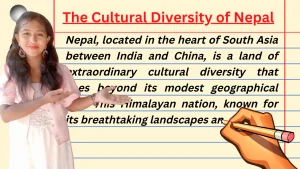
The Cultural Diversity of Nepal

The History of Nepal: From Ancient Times to the Modern Era
Let's Write an Article for Blog
Essay on Natural Resources in Nepal: An Overview
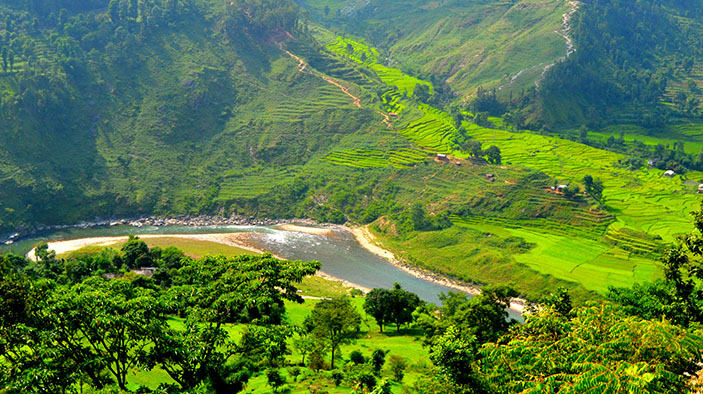
Introduction to Natural Resources in Nepal
Nepal is a land-locked country situated in the Himalayas between India and Tibet. The country is known for its stunning natural beauty, with majestic mountain ranges, pristine forests, and rolling hills. Natural resources are an integral part of the economy and culture of Nepal, providing both livelihoods and recreational opportunities for its citizens. From forests and water to minerals and wildlife, Nepal is blessed with a rich abundance of resources that have the potential to contribute significantly to its development.
Table of Contents
In this essay, we will take a closer look at the natural resources in Nepal, including their types, distribution, and importance. We will also examine the challenges that Nepal faces in managing these resources effectively and the efforts being made to conserve them. This essay aims to provide a comprehensive overview of the natural resources in Nepal and their role in the country’s economy and environment.
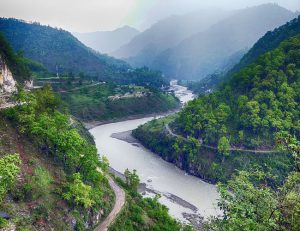
Importance of Natural Resources for Nepal’s Economy
Nepal is a country that is rich in natural resources, including water, forests, minerals, and fertile land. These resources are vital to the economic development of the country and play a crucial role in the lives of millions of people. In this article, we will discuss the importance of natural resources for Nepal’s economy.
Forests and Natural Beauty: Nepal is home to a diverse range of forest types and vegetation, making it a popular tourist destination. The country’s forests provide vital ecosystem services, including watershed protection, carbon sequestration, and habitat for wildlife. In addition, the natural beauty of the forests is a major draw for tourists, generating significant revenue for the country.
Agriculture : Agriculture is the backbone of Nepal’s economy and a significant source of livelihood for millions of people. The country’s fertile land, abundant water resources, and favorable climate conditions make it ideal for agriculture. Agriculture contributes to the country’s GDP, providing food, fiber, and other essential products.
Hydropower: Nepal is known for its abundant water resources and has the potential to generate substantial amounts of hydropower. Hydropower is a clean and renewable source of energy that can contribute to economic growth and reduce dependence on imported fuels. The development of hydropower projects has the potential to create jobs, attract investment, and improve energy security.
Minerals: Nepal is rich in minerals, including iron ore, coal, limestone, and other minerals. The exploitation of these minerals can provide a significant boost to the country’s economy, creating jobs, increasing government revenue, and attracting investment. However, it is important to ensure that mining activities are carried out in an environmentally sustainable manner.
Also Read :- Mahatma Gandhi: Inspiring a Movement for Change
In conclusion, natural resources play a crucial role in Nepal’s economy. The country’s forests, fertile land, water resources, and minerals provide vital ecosystem services and support the livelihoods of millions of people. By leveraging these resources, the country has the potential to achieve sustainable economic growth and improve the quality of life for its citizens.

Types of Natural Resources in Nepal
Water Resources: Nepal is known for its abundant water resources with numerous rivers, lakes and glaciers. Some of the major rivers in Nepal include the Ganges, Indus, and Brahmaputra, which are crucial for agriculture, fishing, and hydropower generation.
Forest Resources: Forests cover about 30% of the total land area of Nepal and provide a wide range of benefits to the country, including fuelwood, timber, medicinal plants, and wildlife habitat.
Mineral Resources: Nepal is rich in minerals such as limestone, iron ore, coal, magnesium, and gold. These resources are essential for the construction, manufacturing, and energy industries.
Agricultural Resources: Nepal is a predominantly agricultural country, with over 80% of its population relying on agriculture for their livelihood. Rice, wheat, maize, and millet are some of the major crops grown in the country.
Wildlife Resources: Nepal is home to a diverse range of wildlife species, including tigers, rhinos, elephants, and monkeys. These resources are crucial for ecotourism, which provides a significant source of income for local communities.
Hydro Power Resources: Nepal has significant potential for hydropower generation, with numerous rivers and streams flowing through the country. This renewable energy source provides a sustainable alternative to fossil fuels and is an important contributor to the country’s economy.
Cultural and Heritage Resources: Nepal is famous for its rich cultural and heritage resources, including monuments, temples, and palaces. These resources are valuable for tourism and play an important role in preserving the country’s cultural identity.
Challenges faced by Nepal in Managing its Natural Resources
Nepal is a landlocked country in South Asia, rich in diverse and abundant natural resources. However, despite having a plethora of natural resources, Nepal faces numerous challenges in managing them effectively. Some of the major challenges faced by Nepal in managing its natural resources are discussed below.
- Limited Awareness: Nepal has a large rural population, where most people are illiterate and lack awareness about the importance of natural resources. This leads to over-exploitation and destruction of natural resources, which affects the country’s overall development.
- Lack of Government Support: The government of Nepal lacks adequate financial and technical resources to effectively manage natural resources. There is also a lack of political will to implement conservation and sustainable management programs, which results in the mismanagement of natural resources.
- Corruption: Corruption is a major challenge in Nepal, and this also extends to the management of natural resources. Lack of transparency in the allocation and management of resources often leads to their exploitation and destruction, leading to an imbalance in the ecosystem.
- Unplanned Development: Unplanned development activities such as deforestation, illegal logging, mining, and other commercial activities often cause severe damage to the environment and natural resources. This results in degradation of the environment, reducing the capacity of natural resources to provide benefits to the local communities.
- Climate Change: Climate change is a major challenge to the management of natural resources in Nepal. Changes in the pattern of rainfall and temperature affect agriculture, forestry, water resources, and other ecosystem services, which impacts the livelihoods of local communities.
- Geographical Challenges: Nepal’s mountainous geography poses a significant challenge to the management of natural resources. The country’s inaccessible terrain makes it difficult for the government to monitor and enforce conservation and sustainable management programs.
In conclusion, Nepal faces numerous challenges in managing its natural resources, but with effective government support, increased awareness, and the implementation of sustainable management programs, these challenges can be overcome. Effective natural resource management is crucial for the country’s overall development and the well-being of its people.
Also Read :- Sundar Pichai : Inspirational Biography, Education, Family and Unexpected Salary of $2M+

Role of Government in Preserving Natural Resources in Nepal
The government of Nepal plays a crucial role in preserving the country’s natural resources, which are essential for the sustainable development and well-being of its people. Natural resources in Nepal include forests, water, minerals, and wildlife, among others. These resources provide numerous benefits, such as providing livelihoods, maintaining ecological balance, and conserving biodiversity.
Forests : Forests cover approximately 37% of Nepal’s land area and are crucial for maintaining the country’s ecological balance. The government has implemented various measures to protect forests and prevent deforestation. For example, the Forest Act of 1993 prohibits the unauthorized felling of trees, and the government has established protected areas, such as national parks and wildlife reserves, to conserve wildlife and forests. Additionally, the government has launched programs to promote sustainable forest management, such as community forestry, where local communities are involved in the management and conservation of forests.
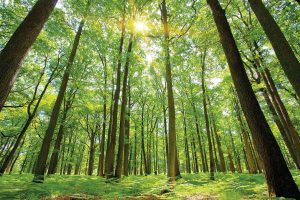
Water: Nepal has abundant water resources, including rivers, lakes, and glaciers, which are essential for agriculture, industry, and drinking water. The government has implemented various measures to conserve and manage water resources, such as the Water Resource Act of 1992 and the National Water Plan of 1992. These laws and policies aim to ensure equitable access to water and prevent water pollution.
Minerals: Nepal has rich deposits of minerals, such as limestone, quartz, and iron ore, which are essential for various industries, including construction, manufacturing, and energy. The government has implemented various measures to manage mineral resources, such as the Mines and Minerals Act of 1992, which regulates the exploration, exploitation, and conservation of minerals. Additionally, the government has established the Department of Mines and Geology to oversee the management of mineral resources and ensure sustainable and responsible mining practices.
Wildlife: Nepal is home to a rich diversity of wildlife, including rare and endangered species, such as the Bengal tiger and the one-horned rhinoceros. The government has established various protected areas, such as national parks and wildlife reserves, to conserve wildlife and prevent illegal hunting and poaching. Additionally, the government has launched programs to conserve wildlife, such as ecotourism, which generates income for local communities and supports conservation efforts.

In conclusion, the government of Nepal plays a critical role in preserving the country’s natural resources, which are essential for the sustainable development and well-being of its people. The government has implemented various measures, such as laws and policies, protected areas, and programs to promote sustainable management and conservation of natural resources. The government’s role in preserving natural resources is crucial for ensuring their long-term sustainability and the well-being of future generations.
Also Read :- Xiaomi Unveils MIUI 14 Global Release for 12 Flagship Devices: Experience the New Android 13-based UI
Community-Based Natural Resource Management in Nepal
Community-based Natural Resource Management (CBNRM) is a critical approach to the sustainable management of natural resources in Nepal. This method of resource management is based on the principle of empowering local communities to participate in the management and decision-making process of the natural resources that affect their lives. The aim of CBNRM is to balance the interests of the local communities, governments, and businesses to ensure that the resources are used for the benefit of all stakeholders.

In Nepal, CBNRM has been implemented in various forms to conserve and manage the country’s vast natural resources, including forests, wildlife, water resources, and land. CBNRM is based on the idea of decentralizing the management of natural resources to the local communities. This approach has been successful in conserving and sustaining the resources while promoting the economic development of the communities.
The government of Nepal has been promoting CBNRM as a means of achieving sustainable development. The government has established various laws, policies, and institutions to support the implementation of CBNRM. For example, the Forest Act 1993 and the Community Forest Management Regulation of 1995 provide the legal framework for the management of community forests.
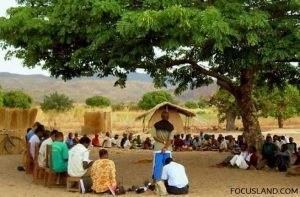
In addition, the government has established the Community-based Natural Resource Management Program (CBNRMP) to provide technical and financial support to communities in their efforts to manage natural resources. The program has been successful in creating a collaborative relationship between the communities, the government, and the private sector to conserve and manage the resources.
The success of CBNRM in Nepal is evident from the increase in the number of community-based organizations (CBOs) that are engaged in the management of natural resources. CBOs have been established in various regions of the country, and they play a critical role in the management of resources, including the protection of forests, wildlife, and water resources.
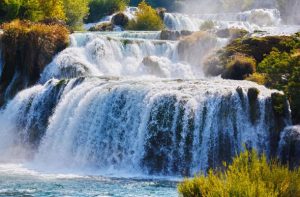
In conclusion, CBNRM is a critical approach to the sustainable management of natural resources in Nepal. The government, local communities, and the private sector must work together to ensure the successful implementation of CBNRM. This will ensure that the resources are used for the benefit of all stakeholders, including the preservation of the environment and the promotion of economic development.
Opportunities for Sustainable Development through Natural Resources in Nepal
Nepal is a country rich in natural resources and has the potential to become a leader in sustainable development. From forests to mineral resources, water resources to wildlife, Nepal has the potential to provide a high quality of life to its citizens while also preserving the environment for future generations.
One of the most significant opportunities for sustainable development in Nepal is the exploitation of its forests. With over 60% of its land area covered by forests, Nepal is one of the most forested countries in the world. These forests provide a vital source of livelihood for millions of people and are also a critical carbon sink. By promoting sustainable forestry practices and utilizing forest products, Nepal can protect its forests while also generating income and creating jobs.
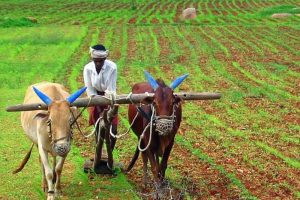
Another opportunity for sustainable development in Nepal is the utilization of its abundant water resources. With numerous rivers and lakes, Nepal has the potential to become a leader in hydroelectric power production. This not only provides a clean and renewable source of energy, but also creates jobs and drives economic growth.
Mineral resources, such as iron, copper, gold and mica, are also abundant in Nepal. The development of these resources can provide a significant boost to the economy and provide employment opportunities. However, it is important to ensure that this development is sustainable and does not harm the environment.
Nepal’s wildlife is also a major opportunity for sustainable development. With a wide range of flora and fauna, Nepal is home to many species that are found nowhere else in the world. By promoting sustainable wildlife tourism, Nepal can protect its unique wildlife while also generating income.
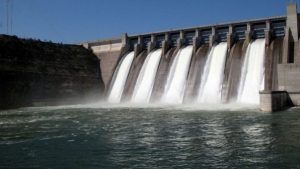
In conclusion, Nepal has numerous opportunities for sustainable development through the use of its natural resources. From forests to water resources to mineral resources, Nepal has the potential to provide a high quality of life for its citizens while also preserving the environment for future generations. By promoting sustainable practices and utilizing these resources wisely, Nepal can become a leader in sustainable development.
Conclusion and Recommendations for Sustainable Use of Natural Resources in Nepal.
In conclusion, Nepal is a country rich in natural resources, including forests, water resources, minerals, and wildlife. The sustainable use of these resources is crucial for the long-term economic and ecological health of the country. However, the current methods of resource extraction and use are unsustainable, and have led to environmental degradation, loss of biodiversity, and increased poverty.
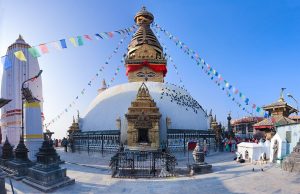
To ensure the sustainable use of natural resources in Nepal, the following recommendations should be implemented:
- Development of sustainable resource management policies: Nepal should establish and enforce policies that promote sustainable resource management practices, including limiting over-extraction, reducing waste, and promoting efficient use.
- Promotion of eco-friendly technologies: Encouraging the use of environmentally friendly technologies and practices can help reduce the impact of resource extraction and use on the environment.
- Community involvement: Engaging local communities in the management and protection of natural resources can help ensure that resources are used sustainably, and that the benefits of resource use are shared fairly.
- Education and awareness: Raising awareness about the importance of sustainable resource use among the general public is crucial to ensure that people understand the impact of their actions on the environment.
- Investment in renewable energy: Investing in renewable energy sources such as solar and wind power can help reduce the dependence on non-renewable resources, while promoting sustainable development.
Also Read :- Class 12 Exam Date 2079/2080 – An Overview for the Students for Navigating the Upcoming Challenge with Confidence
In conclusion, the sustainable use of natural resources is essential for the long-term prosperity and well-being of Nepal and its people. By implementing these recommendations, Nepal can ensure that its rich natural resources are used in a responsible and sustainable manner, for the benefit of present and future generations.
Related Posts
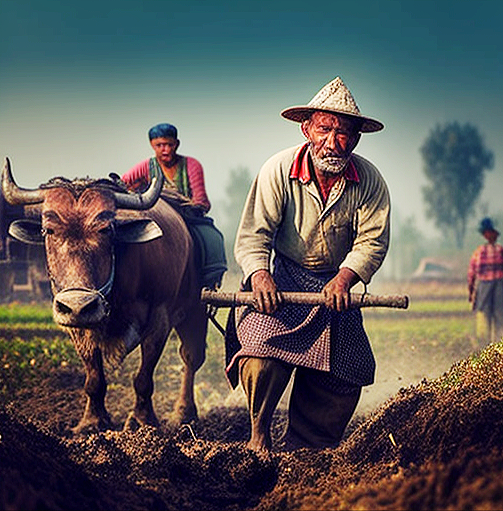
Agriculture in Nepal: An Essay with Comprehensive Analysis
One thought on “ essay on natural resources in nepal: an overview ”.
You’ve been great to me. Thank you!
Leave a Reply Cancel reply
Your email address will not be published. Required fields are marked *
Save my name, email, and website in this browser for the next time I comment.
- Terms & Condition
- Privacy policy

- _Multi Dropdown
- __Dropdown 1
- __Dropdown 2
- __Dropdown 3
- ApplicationLetter

मेरो देश नेपाल बारे निबन्ध | Essay on my country nepal in nepali
मेरो देश नेपाल बारे निबन्ध | essay on my country nepal in nepali , मेरो देश नेपाल बारे निबन्ध (१५० शब्दहरु ) mero desh essay in nepali language, मेरो देश को बारेमा निबन्ध 200 शब्दमा essay on my country in nepali in 200, मेरो देश नेपाल बारे निबन्ध (२५० शब्दहरु ) mero desh nepal essay in nepali, मेरो देश को बारेमा निबन्ध 300 शब्दमा essay on my country in nepali in 300, मेरो देश नेपाल बारे निबन्ध ( ५०० शब्दहरु) essay on my country nepal in nepali in 500 words, recommended posts, post a comment.
Thanks for visit our site, please do not comment any spam link in comment box.
एक टिप्पणी भेजें
Contact form.
- Privacy Policy

- _Multi DropDown
- __Nepali Rashifal
- __Today's Nepali Date
- __Nepali Unicode
- Model Questions
- NEB CLASS 12
Nepali Essay Topics Lists | Nibandha Lekhan

Here I have put some Nepali essays (nibandha) which are frequently asked in exams:
Here are your tips to write an essay.
Here is the topic list of Nepali Essay :
1 नेपाल
2 मेरो देश
3 सगरमाथा
4 मेरो देश मेरो गौरव
5 नेपालको राष्ट्रिय झण्डा
6 नेपालको राष्ट्रिय जनवार
7 तिज
8 दशैँ
9 तिहार
10 होली
11 नेपाली चाडपर्वहरु
12 नेपालको सस्कृति
13 पुस्तकालय
14 गाउँले जीवन
15 सहरिया जीवन
16 शिक्षाको महत्व
17 मेरि आमा
18 मेरो बुबा
19 मेरो परिवार
20 मेरो मिल्ने साथी
21 मेरो विद्यालय
22 मेरो घर
23 मेरो गाउँ
24 पानीको महत्व
25 हाम्रो स्वास्थ्य
26 स्वास्थ्य नै धन हो
27 वाताबरण
28 विधार्थी जीवन
29 अनुशासन
30 विधार्थी जीवनमा अनुशासनको महत्व
31 भ्रष्टाचार
32 लोकतन्त्र
33 प्राविधिक शिक्षाको महत्व
34 विज्ञान र प्रबिधि
35 संचार प्रविधि
36 सरस्वती पुजा
37 गाईको बारेमा निबन्ध
38 कुकुर बारेमा निबन्ध
39 महिला हिंसा
40 मेरो जन्मस्थान
41 फूलबारी
42 इन्टरनेट
43 मोबाइल
44 टेलिभिजन
45 फुटवल
46 क्रिकेट
47 मेरो जीवनको लक्ष्य
48 नेपालको विकाशमा पर्यटनको महत्व
49 प्राकृतिक स्रोतहरु
50 मनपर्ने खेल
51 मनपर्ने खानेकुरा
52 नेपालको राजनीतिक अवस्था
53 वायु प्रदूषण
54 नेपालको भौगोलिक अवस्था
Also read: मेरो विद्यालय।
You may like these posts
Post a comment, social plugin, search this blog, nepali time.

Popular Posts
.png)
मेरो जीवनको लक्ष्य निबन्ध | Mero Jivan ko Lakshya Nibandha |

Class 12 Chemistry : Important Questions and Topics for NEB exam.

देशप्रतिको मेरो कर्तव्य निबन्ध | Mero Desh Pratiko Mero kartavya |
- IOE Entrance (44)
- NEB Class 12 (25)
- Nepali Nibandha (24)
- Class 11 (21)
- Model Questions (4)
- Date converter
- IOE Entrance
- NEB Class 12
- Nepali Date
- Nepali Nibandha
- Nepali Rashifal
- Nepali Unicode
Random Posts
.png)
Footer Menu Widget
- Privacy Policy

- English Literature
- Essay Compositions
- PVA Class 8
Essay on Mountains in Nepal
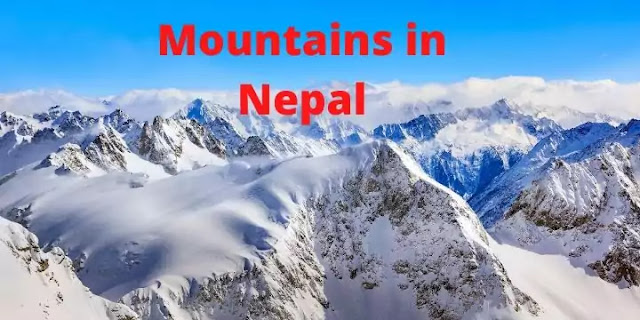
Mountains in Nepal
Post a comment, search in this blog, popular posts.

Essay on Water Resources in Nepal

BLE English Unit 2 Solution

Holi Class 8 Solution

BLE Class 8 Unit 1 Problem Solved

Essay on Road Transportation In Nepal

Essay on Natural Disasters In Nepal

My Country My Pride

Social Harmony In Nepal Essay

Essay on Pollution In Nepal

Essay on Agriculture in Nepal
Thanks a million.
Copyright (c) 2020 Problems Solved All Rights Reseved
Menu Footer Widget

Essay on Nepali Culture
Students are often asked to write an essay on Nepali Culture in their schools and colleges. And if you’re also looking for the same, we have created 100-word, 250-word, and 500-word essays on the topic.
Let’s take a look…
100 Words Essay on Nepali Culture
Introduction to nepali culture.
Nepali culture is like a beautiful garden with many kinds of flowers. It is a mix of traditions, values, and customs. This culture comes from the people of Nepal, a country in South Asia. It is known for its mountains, like Mount Everest, and its history.
Language and Religion
In Nepal, many people speak Nepali, but there are over 120 other languages too. Religion is important, with Hinduism and Buddhism being the most followed. Many festivals come from these religions, which people celebrate with joy.
Festivals and Food
Nepali festivals are colorful and full of life. Dashain and Tihar are the biggest ones. People eat special foods, play music, and enjoy dances. The food in Nepal is tasty and includes dishes like dal bhat (rice and lentils) and momo (dumplings).
Traditional Clothing
In Nepal, traditional clothes are worn with pride. Men wear a daura-suruwal and women wear a sari or kurta. These clothes are often made with bright colors and fine materials, showing the beauty of Nepali handwork.
Art and Music
Art and music are important in Nepal. Paintings and sculptures show stories of gods and daily life. The music is made with instruments like the madal and sarangi, creating tunes that are both happy and sad.
250 Words Essay on Nepali Culture
Nepali culture is like a beautiful garden with many kinds of flowers. It is rich with traditions, festivals, music, and dances. Nepal is a country in South Asia, home to the tall Mount Everest and many other mountains. The people living there come from different backgrounds and speak many languages, but they all share the culture of Nepal.
Festivals and Celebrations
One of the most important parts of Nepali culture is festivals. Dashain is the biggest festival where families come together, enjoy food, and children get gifts. Tihar, another festival, is when people light up their homes with candles and lamps. They also honor animals like crows, dogs, and cows. These festivals show how Nepalese people love family, nature, and animals.
Food in Nepal
The food of Nepal is tasty and unique. Dal Bhat, which is rice and lentil soup, is a common meal. Momos, which are like dumplings filled with meat or vegetables, are very popular too. The food is not just about eating; it is a way for families to sit together and share their day.
In Nepal, people wear special clothes that are part of their culture. Men often wear a dress called Daura-Suruwal and a cap named Dhaka Topi. Women wear beautiful long skirts called Gunyu Cholo. These clothes are not just for daily wear but also for special occasions to show respect to their culture.
In conclusion, Nepali culture is full of life, colors, and joy. It brings people together through festivals, food, and clothing. Even though it has many different parts, they all fit together to make the culture of Nepal special and interesting for everyone, especially for students learning about new places in the world.
500 Words Essay on Nepali Culture
Nepali culture is like a beautiful garden with many kinds of flowers. It is rich with traditions, art, festivals, and music. Nepal is a small country between China and India. Yet, it has a big heart filled with cultural treasures. People from different backgrounds live together in Nepal, sharing their customs and beliefs.
In Nepal, many languages are spoken. Nepali is the main language, but people also speak Maithili, Bhojpuri, and dozens of other languages. This shows how diverse the country is. Religion is a big part of life in Nepal. Most people follow Hinduism or Buddhism. The two religions mix in many ways, showing respect and peace among the people.
Nepal is known for its colorful festivals. Dashain is the biggest festival. It is a time when families come together, share food, and give blessings. Tihar, also known as the festival of lights, is another important celebration. People light up their homes and honor animals like dogs and cows. These festivals show the joy and kindness in Nepali culture.
Food and Cuisine
Food in Nepal is tasty and unique. Dal Bhat, a dish of lentils and rice, is eaten almost every day. Momos, which are dumplings filled with meat or vegetables, are a favorite snack. The food is not just about taste; it is also about bringing family and friends together to share a meal.
The clothes in Nepal are bright and beautiful. Women often wear sarees or a long skirt called a ‘gunyu cholo’. Men wear a ‘daura suruwal’, which is a shirt and trousers with a Nepali style. These clothes are worn with pride, especially during festivals and important events. They are a symbol of the Nepali way of life.
Music and Dance
Music and dance are important in Nepal. They tell stories of the land and its people. Traditional instruments like the ‘madal’ and ‘sarangi’ make music that touches the heart. Folk dances are performed during festivals. They are full of energy and smiles, showing the happiness of the Nepali spirit.
Arts and Crafts
Nepali arts and crafts are famous for their beauty. Paintings, pottery, and sculptures are made with great skill. Many of these items show scenes from religion and nature. They are not just things to look at; they are pieces of the soul of Nepal.
Nepali culture is a wonderful mix of people, traditions, and nature. It is like a colorful painting that tells a story of harmony and friendship. The culture is deep and alive, touching everyone who experiences it. It is a treasure that the people of Nepal share with the world, and it makes the country a special place full of warmth and beauty.
That’s it! I hope the essay helped you.
If you’re looking for more, here are essays on other interesting topics:
- Essay on Nepal
- Essay on Neolithic Revolution
- Essay on Gardening With Family
Apart from these, you can look at all the essays by clicking here .
Happy studying!
Leave a Reply Cancel reply
Your email address will not be published. Required fields are marked *
Save my name, email, and website in this browser for the next time I comment.

Four Short Essay & Paragraph On Country Nepal
Nepal is a small Asian nation. It is commonly referred to as the ‘top of the world.’ It is bordered on the south by India, on the north and east by China, and on the west by Tibet. Nepal is a term that signifies “country of Nepalis” or “our own country.”
Table of Contents
Short Essay And Paragraphs About Nepal In English
1. short paragraph on country nepal.
Nepal has a number of public holidays that are honored all year. Magh 8, May 28 (Democratic Victory Day), Janai Purnima, and Nwaran/Dashain/Tihar (Owls Festival), also known as Diwali in India, are among them. Dashain is Nepal’s most important festival, which is observed by all Hindus in Nepal and India as a victory over bad spirits. The Losar is another major Nepalese event (Tibetan New Year ).
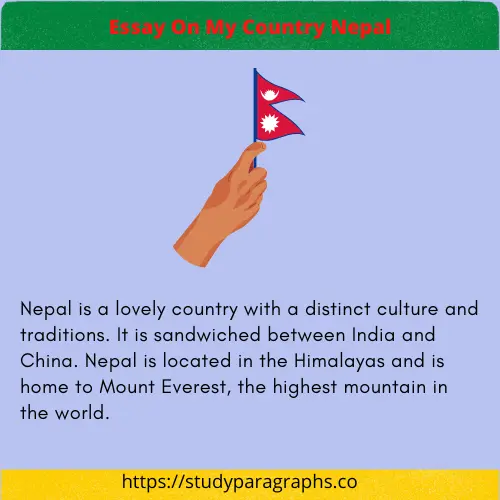
Nepal’s geography is diversified, with lush plains, river valleys, high mountains, and rough highlands. Nepal is home to Mount Everest, the world’s highest peak. There are numerous attractive spots in the nation that draw tourists from all around the world. Mandu Valley, Pokhara, Lumbini, Kathmandu, and Chitwan National Park are among the most popular tourist sites in Nepal.
Nepal is a country that is rapidly developing. It was severely impacted by the recent ‘Great Earthquake,’ which killed over 8500 people and injured 22,000 more. The Nepalese government is providing all possible help to individuals who have sustained losses as a result of the earthquake.
This has created an opportunity for foreign assistance agencies and non-governmental organisations (NGOs) to provide relief and assist in rebuilding Kathmandu and other hard-hit districts. Many non-governmental organisations (NGOs) such as Save the Children, ActionAid International, Oxfam International, and others are working in various districts of Nepal to provide health care, food security, and housing assistance to women and children affected by the earthquake.
Nepal is a lovely country with a distinct culture and traditions. It is sandwiched between India and China. Nepal is located in the Himalayas and is home to Mount Everest, the highest mountain in the world. Nepali and English are the primary languages. Among the religions are Hinduism, Buddhism, and Islam.
2. Brief Essay on Nepal
Nepal is a small landlocked country located in South Asia, bordered by China and India. With a population of around 29 million, Nepal is known for its diverse culture and geography, which ranges from the Himalayan mountain range in the north to the tropical Terai region in the south.
Nepal is home to eight of the world’s ten highest peaks, including Mount Everest, the highest peak in the world. The country’s rugged terrain and high altitude make it a popular destination for mountaineers and trekkers from around the world. The diverse landscapes of Nepal, including the Himalayas, forests, and rivers, also make it a haven for outdoor enthusiasts, adventure seekers, and nature lovers.
The culture of Nepal is deeply rooted in its Hindu and Buddhist heritage. The Kathmandu Valley, the country’s cultural and historical heart, is home to several UNESCO World Heritage sites, including the Swayambhunath Stupa, also known as the Monkey Temple, and the Pashupatinath Temple, a sacred Hindu temple. Nepal is also famous for its traditional festivals, such as the Tihar festival, which is celebrated with the lighting of oil lamps, and the Dashain festival, which marks the victory of good over evil.
Despite its natural beauty and rich cultural heritage, Nepal is one of the poorest countries in the world, with a low per capita income and high levels of poverty. The country has been facing political instability and economic challenges in recent years. However, it is also a country that is resilient and hardworking, with a strong sense of community and hospitality.
In conclusion, Nepal is a small landlocked country located in South Asia, known for its diverse culture and geography. From the Himalayas to the tropical Terai region, the natural landscapes of Nepal are a paradise for outdoor enthusiasts and nature lovers. The culture of Nepal is deeply rooted in its Hindu and Buddhist heritage, and is reflected in its traditional festivals and UNESCO World Heritage sites. Despite its poverty, Nepal is a resilient and hardworking country with a strong sense of community and hospitality.
3. Essay on Nepali Language
Nepali, also known as Nepalese or Gurkha, is the official language of Nepal and is spoken by around 17 million people in Nepal and Bhutan, as well as by a significant number of people in India and around the world. Nepali is a member of the Indo-Aryan branch of the Indo-European language family, and it is closely related to Hindi and Bengali.
Nepali is written in the Devanagari script, which is also used to write Hindi and Sanskrit. The script is made up of a combination of vowels and consonants, and it is read from left to right. The language has a rich vocabulary, and it has been heavily influenced by Sanskrit and other languages spoken in the region.
Nepali is a tonal language, which means that the meaning of words can change depending on the tone used to pronounce them. It has two tones, the high and low tone, which are indicated by diacritics above the letters.
The Nepali language has a rich literary tradition, and it has produced many poets, writers, and scholars. Nepali literature has a history that dates back centuries and it encompasses many genres, such as poetry, novels, and plays. The language has also been used in the field of education, and it is taught in schools and universities in Nepal and abroad.
Nepali is also a language of great cultural significance. It is spoken by many ethnic groups in Nepal, each with their own unique dialects, customs, and traditions. The language is a vital part of Nepal’s cultural heritage, and it is an important tool for preserving the country’s rich cultural diversity.
4. Essay on Nepali Culture
Nepali culture is a rich tapestry of diverse customs, traditions, and beliefs that have been shaped by the country’s history, geography, and ethnic diversity. Nepal is a small landlocked country located in South Asia, and it is known for its diverse culture and geography, which ranges from the Himalayan mountain range in the north to the tropical Terai region in the south.
One of the most important aspects of Nepali culture is its religious heritage. Nepal is predominantly a Hindu country, and Hinduism is deeply ingrained in the culture and daily life of Nepalese people. The country is also home to a significant Buddhist population, and the two religions coexist in harmony. The Kathmandu Valley, the country’s cultural and historical heart, is home to several UNESCO World Heritage sites, including the Swayambhunath Stupa, also known as the Monkey Temple, and the Pashupatinath Temple, a sacred Hindu temple.
Nepali culture is also known for its traditional festivals, which are celebrated throughout the year. The Tihar festival, also known as the festival of lights, is celebrated with the lighting of oil lamps, and the Dashain festival, which marks the victory of good over evil. These festivals are an important part of Nepali culture and bring communities together to celebrate, dance and feast.
Another important aspect of Nepali culture is its art and craft. Nepal is famous for its traditional handicrafts, such as pottery, weaving, and metalwork, which are produced by skilled artisans. Nepali art is also known for its intricate carvings, which can be found on temples and shrines throughout the country.
The Nepali language is also an important aspect of the culture, it is spoken by around 17 million people in Nepal and Bhutan, as well as by a significant number of people in India and around the world. It has a rich vocabulary, and it has been heavily influenced by Sanskrit and other languages spoken in the region.
In conclusion, Nepali culture is a rich tapestry of diverse customs, traditions, and beliefs that have been shaped by the country’s history, geography, and ethnic diversity. Religion, festivals, art, crafts, and language are some of the most important aspects of Nepali culture. Nepal is a small landlocked country located in South Asia.

Hello! Welcome to my Blog StudyParagraphs.co. My name is Angelina. I am a college professor. I love reading writing for kids students. This blog is full with valuable knowledge for all class students. Thank you for reading my articles.
Related Posts:
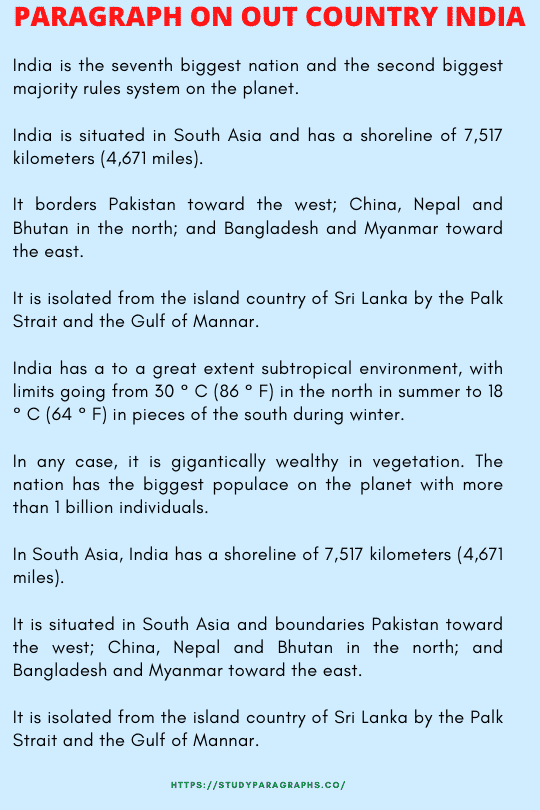
Nepali Educate
Essay on: rivers in nepal.
Rivers in Nepal
M oving mass of water which flows from high land to low land is called river. Rivers begin or rise to flow from mountains or lakes. They flow through mountains, rocks and plain lands. They finally fall in to the sea or some other river. There are a large number of rivers in Nepal. Most of them rise from Himalayas or high mountains. However, some come from the mountain tops. Most of the rivers in Nepal start from snow-capped mountains so they flow continuously. These rivers are permanent in flowing water.
A few names of such rivers are: Koshi, Tamor, Gandaki, Karnali, Arun, Trisuli, Rapti,Sunkoshi, Narayani, Seti etc. Koshi is the biggest, Gandaki is the deepest and Karnali is the longest of all these rivers in Nepal. We all are rich in water resource. We can make good income from these rivers. However, only a little part of water resource is in proper usage. It is unfortunate that most of the water flows down uselessly.
Rivers are very useful. They have many advantages. some of their advantages are given as follows. We can irrigate our fields from the water of rivers. People can use the water of rivers as drinking water. We can get fish from rivers. The rivers of Nepal are very effective to produce hydro-electricity. We can row boat and raft along the rivers. Rivers can create some problems also. Flooding is one of the most dangerous problems caused by river.
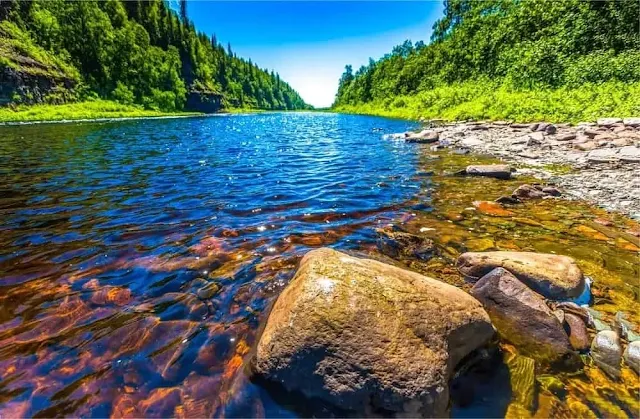
About the Author
Post a comment.

English Written
- Sub Child Category 1
- Sub Child Category 2
- Sub Child Category 3
- Child Category 2
- Child Category 3
- Child Category 4
- Sub Page #1
- Sub Page #2
- Sub Page #3
- Child Rights
- Childless women
- Common Folk
- Dowry system
- Drugs Addiction
- Historical Place
- Native Town
Wednesday, March 19, 2014
- Essay on The Himalayas/The Mountains in Nepal.
Nepal is a mountainous country. She is known as the land of the Himalayas. The Himalayas situated in the northern part of the country must have uplifted the identity and dignity of her. The high mountains in Nepal are covered with snow; but the lower parts of them are covered with grass and plants. Many people live in mountains. Most of the fertile lands are cultivated. The mountains are not densely populated. Life of the people is difficult there. Most of the people are framers. Higher mountains are also used to graze the cattle such as cows, yaks, goats and sheep. The now-capped mountain peaks tempt many foreign tourists. They seem to be attractive but they are getting polluted nowadays. The main attractions of tourism in Nepal are these lofty mountains. These heavenly mountains attributing angelic beauty in Nepal play a cosmic role to the enhancement of tourism. Our tourism trade depends on them. Many tourists eagerly visit Nepal to watch the mountains. Some of them come here to climb the snowy mountains; especially they climb Mt. Everest, the highest peak in the world. Many rare herbs are found in the Himalayan regions of Nepal. We can use them directly s the medicine or they can be used to make important medicines. If we export them to foreign countries, we can earn foreign currency. The snow-capped mountains are the origins of the rivers in Nepal. Therefore, mountains are the permanent sources of water. The climate and environment are completely fresh and healthy in the mountains. That’s why the inhabitants of the mountain regions are always vigorous and robust. We can have some disadvantages from mountains. They are one of the hindrances to the development of the country. The fertility of the land is not rich in the mountains. The farmers are under the poverty line. Roads are the basic requirements of any other development programmers. But road making in mountains proves to be very slow and expensive. The life style of the people is very difficult. Many natural disasters such as landslides, over flood and soil erosion affect the people badly. The main problem in the mountains is lack of good transportation and communication. Nowadays, the life style of the people in the mountains is getting uplifted because the problem of transportation and communication has been lessened. Most of the people have started growing vegetables and fruits which prove to be more advantageous than traditional farming. If the mountain regions are properly developed, the status of the country certainly gets uplifted. It is said that the development of the mountains in Nepal supports the development of the whole country. Unique prosperity of the nation can be achieved if all the mountain regions are apply and amply developed to foster the people’s life style and status. The government and all sectors concerned and expected to play the prime role to alleviate the misery of the inhabitants of the mountain regions.
10 comments:
Read Essay on Mountaineering in Nepal
I think you have done a mistake on the first line please read it once you have written she is known as......
I think you had done mistake in 2nd paragraph's ninth line it should be snow capped
But there are some mistakes
Mountains in Nepal - Essay
Check out this bro.. Mountains in Nepal - Essay
She means country nepal.
You have bad english . Frist ne perfect in english and try to wirti essay.
Post a Comment
- Blog Archives
Popular Posts
- Essay on Tourism in Nepal. Our country Nepal is rich in natural beauties gifts, resources and wonders. There are many places and things of cultural, histo...
- Essay on Technical Education The education which provides special practical knowledge and skills in known as technical education. It is differen...
- Essay on Child Rights in Nepal. Human beings want to enjoy freedom, justice and peace. Children naturally want to enjoy rights. They are ignorant and deserve...
- Essay on My Hiking Experience Hiking refers to the activity of going for long walks in the country for pleasure, knowledge and exercises. Last year, I went hiking...
- Essay on The Forest of Nepal. Nepal is rich in natural beauties, gifts, resources and wonders. The forest is one of these resources. Nepal is also a mountain...
- Essay on The Himalayas/The Mountains in Nepal. Nepal is a mountainous country. She is known as the land of the Himalayas. The Himalayas situated in the northern part...
- Essay on My Visit to a Historical Place. Gorkha is a unique historical place of Nepal. It belongs to the history of Shah dynasty. Prithivi Narayan Shah who unified our ...
- Essay on My Native Town. The place where someone was born is called his native place. Some people live in villages and some people live in town. I...
- Essay on Dowry System We live in our society. It is made up of different castes and sub-castes. There are different traditions and cultures. Some of...
- Essay on Women Empowerment in Nepal Nepalese women occupy more than fifty percentage of the total population. Generating women’s power is refereed to as women em...
Blog Archive
- Essay on The Nepali Common Folk
- Essay on The Condition of Childless Women in Our S...
- Essay on My Hiking Experience
- Essay on Mass Media in Modern Nepal
- Essay on Future of Trekking in Nepal.
- Essay on Technical Education
- Essay on Holidays
- Essay on Games
- Essay on Education for children.
- Essay on Drug Addiction-A Major Social Problem.
- Essay on Dowry System
- Essay on Child Rights in Nepal.
- Essay on Animals Right
- Essay on Adult Education.
- Essay on The Forest of Nepal.
- Essay on Tourism in Nepal.
- Essay on My Visit to a Historical Place.
- Essay on My school
- Essay on My Native Town.
- Essay on an amusing event in my life.
- Essay on My country Nepal.
- Essay on wild Animals in Nepal.
- Essay on Women Empowerment in Nepal
Recent Posts
Blogger tricks, blogger themes, footer widget 1, footer widget 3.

IMAGES
VIDEO
COMMENTS
It is one of the largest wonders of the world and the region around this is a wonderful place. Mt.Everest is the highest mountain peak on the earth, which lies in the world's highest Mountain Range, The Himalayas. The height of Mt.Everest is 8848m or 29028.87 ft. In early time, Mt.Everest was referred to as Peak XV and after the British.
सबै विद्यार्थीहरुको लागि सगरमाथा बारे निबन्ध(sagarmatha essay in nepali ) Sagarmatha ko ...
Mero Desh Nepal - Nepali Essay (Nibandh) Mero Desh Nepal Essay In Nepali Language in more than 500 words for Class 7 to Class 12. Nepal is a landlocked country in South-East Asia. It is bordered by China in the north and India in the south, east, and west. Nepal is known for its stunning mountains, including Mount Everest, the tallest mountain ...
Manaslu (/ m ə ˈ n ɑː s l uː /; Nepali: मनास्लु, also known as Kutang) is the eighth-highest mountain in the world at 8,163 metres (26,781 ft) above sea level.It is in the Mansiri Himal, part of the Nepalese Himalayas, in west-central Nepal.Manaslu means "mountain of the spirit" and the word is derived from the Sanskrit word manasa, meaning "intellect" or "soul".
Many mountains are present on Earth and out of the many beautiful snow-capped or stone-plated mountains, the highest one of them all is Mount Everest. Mount Everest is the highest peak in the Himalayas of Nepal. It stands at about 8848 meters from sea level. It is located above the death zone on the Nepal-China border. It was named after Sir.
Loksewa
Selected Nepali Essays. ... eyes face fact fall feel feet field flowing forest forget friends give grow hand happiness head heart hill human jungle Kathmandu keep land language leaves literature living look meaning merely mind mother mountain moved natural Nepal never night one's past peepul tree perhaps person pigeon poems poet present problem ...
Interdependence. Faith. Tradition. Patience. Tolerance. Dependability. Nepal is a landlocked, mountainous country located between India and Tibet. It is well known for the impressive Himalayan range and deep valleys that shape the landscape. Nepalis have a reputation for being dependable and resilient people who can withstand difficult conditions.
Essay on Himalaya Mountains (1000 Words) Hi, and welcome to the beautiful world of the Himalaya Mountains. This world is a reminder of how strong nature is. These mountains hold secrets about how the Earth was formed. They are full of different kinds of plants and animals and have a lot of culture and history.
Its towering presence in Nepal goes beyond being a mere geographical landmark; it has become an iconic symbol that has profoundly shaped the country's tourism industry and left an indelible mark on the lives of the Nepalese people. ... In this essay, we delve deeper into the multifaceted influence of Mount Everest on Nepal's tourism sector ...
1.1 General Background of Nepalese Economy. Nepal is a small beautiful country with highest mountain, Mt. Everest and with third highest mountain, Kanchanganga in the world. Nepal has a scenic beauty with high prospects of tourism development. Besides, the country is very rich in water resources, mineral resources, and forest resources.
The country's unique geography, with its towering mountains and rolling hills, has contributed to the development of a distinct culture that is shaped by various factors. ... In this essay, we will explore the rich and diverse cultural heritage of Nepal. ... Nepali language and dialects. Nepal is home to over 100 languages and dialects, with ...
Nepal is a country that is rich in natural resources, including water, forests, minerals, and fertile land. These resources are vital to the economic development of the country and play a crucial role in the lives of millions of people. In this article, we will discuss the importance of natural resources for Nepal's economy.
आज मेरो देश नेपाल बारे निबन्ध (essay on my country nepal in nepali) कक्षा ५, ६, ७, ८, ९, १०, ११ र १२ का लागि 150, 200, 250, 300, 500 शब्दमा छन । ... mero desh essay in nepali language
Pasang Lhamu Sherpa (Sherpa: པ་སངས་ལྷ་མོ་ཤར་པ།, Nepali: पासाङ ल्हामु शेर्पा; 10 December 1961 - 22 April 1993) was the first Nepalese woman to climb the summit of Mount Everest.. She was born in a mountaineering family and was involved in climbing from her teens. She had successfully climbed Mount Blanc, Mount Cho Oyu, Mount ...
500 Words Essay on Nepal Introduction to Nepal. Nepal is a small, beautiful country in South Asia. It is landlocked, which means it does not touch the sea. It is found between two giant countries, India and China. Nepal is known for its stunning mountains, rich culture, and brave history. It is a place where nature and culture come together.
Do not make the body of the essay lengthy or monotonous. 12. Do not repeat the same thing, the same words time and again. 13. Conclude the essay in short in one paragraph including the main points that support the topic of the essay. Here is the topic list of Nepali Essay: 1 नेपाल. 2 मेरो देश.
Nepal, country of Asia, lying along the southern slopes of the Himalayan mountain ranges. It is a landlocked country located between India to the east, south, and west and the Tibet Autonomous Region of China to the north. Its territory extends roughly 500 miles (800 kilometres) from east to west and 90 to 150 miles from north to south.
As the world knows that our country Nepal is a mountainous country. Our mountainous country is also known as the land of the Himalayas. It is because there are more than 8 mountains which are above 8 thousand meters in height. The Himalayas situated within the northern part of the country must have uplifted the identity and dignity of her.
100 Words Essay on Nepali Culture Introduction to Nepali Culture. Nepali culture is like a beautiful garden with many kinds of flowers. It is a mix of traditions, values, and customs. This culture comes from the people of Nepal, a country in South Asia. It is known for its mountains, like Mount Everest, and its history.
2. Brief Essay on Nepal. Nepal is a small landlocked country located in South Asia, bordered by China and India. With a population of around 29 million, Nepal is known for its diverse culture and geography, which ranges from the Himalayan mountain range in the north to the tropical Terai region in the south.. Nepal is home to eight of the world's ten highest peaks, including Mount Everest ...
Most of the rivers in Nepal start from snow-capped mountains so they flow continuously. These rivers are permanent in flowing water. A few names of such rivers are: Koshi, Tamor, Gandaki, Karnali, Arun, Trisuli, Rapti,Sunkoshi, Narayani, Seti etc. Koshi is the biggest, Gandaki is the deepest and Karnali is the longest of all these rivers in ...
Essay on The Himalayas/The Mountains in Nepal. Nepal is a mountainous country. She is known as the land of the Himalayas. The Himalayas situated in the northern part of the country must have uplifted the identity and dignity of her. The high mountains in Nepal are covered with snow; but the lower parts of them are covered with grass and plants.